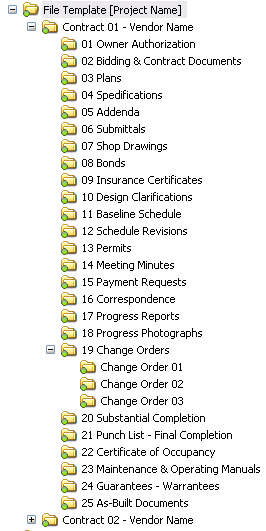

EDoc Organizer is a reliable, intuitive and easy to use Document management software that is a perfect Digital Filing Software System for Homes and Businesses. FileCenter, the low-cost leader in document management, only concerns itself with one thing: setting you free. End the struggle. Shed the weight of paper and complex software. Discover what thousands of users like you have already found. Invoke Quicksilver. Type “E” to go to your “E” folder. Press Tab, and type “N” to select the “New Folder” command. Press Tab again, and type “eBooks”, and Enter to create the folder. Now type Command+G to drop your highlighted file into Quicksilver. Press Tab, and type “M” to choose the “Move to” command. Mac maintenance might not be as vital to the day-to-day operation of your Mac as it once was, but slow-downs still happen. And when they do, Onyx will clear them up. A general-purpose utility with. Paper Tiger greatly SIMPLIFIED filing by eliminating the problems found in traditional alphabetic methods and made finding paper files in the office faster and much more reliable. The software is a very powerful, yet simple indexing system for paper office files. It works like a.
Is your Mac up to date with the latest version of the Mac operating system (macOS or OS X)? Is it using the version required by some other product that you want to use with your Mac? Which versions are earlier (older) or later (newer, more recent)? To find out, learn which version is installed now.
If your macOS isn't up to date, you may be able to update to a later version.
Which macOS version is installed?
From the Apple menu in the corner of your screen, choose About This Mac. You should see the macOS name, such as macOS Mojave, followed by its version number. If you need to know the build number as well, click the version number to see it.
This example shows macOS Catalina version 10.15 build 19A583.
Which macOS version is the latest?
These are all Mac operating systems, starting with the most recent. When a major new macOS is released, it gets a new name, such as macOS Catalina. As updates that change the macOS version number become available, this article is updated to show the latest version of that macOS.
If your Mac is using an earlier version of any Mac operating system, you should install the latest Apple software updates, which can include important security updates and updates for the apps that are installed by macOS, such as Safari, Books, Messages, Mail, Music, Calendar, and Photos.
| macOS | Latest version |
|---|---|
| macOS Catalina | 10.15.7 |
| macOS Mojave | 10.14.6 |
| macOS High Sierra | 10.13.6 |
| macOS Sierra | 10.12.6 |
| OS X El Capitan | 10.11.6 |
| OS X Yosemite | 10.10.5 |
| OS X Mavericks | 10.9.5 |
| OS X Mountain Lion | 10.8.5 |
| OS X Lion | 10.7.5 |
| Mac OS X Snow Leopard | 10.6.8 |
| Mac OS X Leopard | 10.5.8 |
| Mac OS X Tiger | 10.4.11 |
| Mac OS X Panther | 10.3.9 |
| Mac OS X Jaguar | 10.2.8 |
| Mac OS X Puma | 10.1.5 |
| Mac OS X Cheetah | 10.0.4 |
Important:This document may not represent best practices for current development. Links to downloads and other resources may no longer be valid.
The following sections discuss the file systems supported by OS X and the impact they can have on application performance.
Supported File Systems
OS X supports a variety of file systems and volume formats, including those listed in Table 1. Although the primary volume format is HFS Plus, OS X can also boot from a disk formatted with the UFS file system. Future versions of OS X may be bootable with other volume formats as well.
File System | Description |
|---|---|
HFS | Mac OS Standard file system. Standard Macintosh file system for older versions of Mac OS. |
HFS Plus | Mac OS Extended file system. Standard Macintosh file system for OS X. |
UFS | Unix File System. A variant of the BSD “Fast File System.” |
WebDAV | Used for directly accessing files on the web. For example, iDisk uses WebDAV for accessing files. |
UDF | Universal Disk Format. The standard file system for all forms of DVD media (video, ROM, RAM and RW) and some writable CD formats. |
FAT | The MS-DOS file system, with 16- and 32-bit variants. |
SMB/CIFS | Used for sharing files with Microsoft Windows SMB file servers. |
AFP | AppleTalk Filing Protocol. The primary network file system for all versions of Mac OS. |
NFS | Network File System. A commonly-used BSD file sharing standard. OS X supports NFSv2 and NFSv3 over TCP and UDP. |
FTP | A file system wrapper for the standard Internet File Transfer Protocol. |
Accessing File-System Data
Every file system stores metadata about the files in the file system. This metadata describes the file but is not part of the file itself. The metadata for a file can include attributes such as Mac OS file type information, BSD-style file access permissions, and creation and modification dates. Because of the differences in how file systems store this data, accessing metadata can be a potentially expensive operation on some file systems.
It’s important to realize that if a piece of data is not immediately present in the file system, that information might have to be calculated. Retrieving file-system information is a time-consuming operation as it is, but if the information must be calculated or read separately from disk, it becomes even more time-consuming. The valence of a directory—the number of items in that directory—is a typical example of information that must be calculated on most file systems.
When calling file-system routines, you should always carefully consider what information you actually need and request only that information. For example, a single call to PBGetCatInfoSync returns Finder file type information from a file or folder. On HFS and HFS Plus file systems, the penalty for retrieving this metadata is minimal because it is stored in the file’s catalog node and read into memory along with the file name. However, on other file systems, this data may have to be read separately, incurring another read operation. Instead of PBGetCatInfoSync, you should have used FSGetCatalogInfo or PBGetCatalogInfoSync and specified exactly which pieces of information you wanted.
Filing System Software

Softwares For Filing
Copyright © 2003, 2014 Apple Inc. All Rights Reserved. Terms of Use | Privacy Policy | Updated: 2014-03-10
